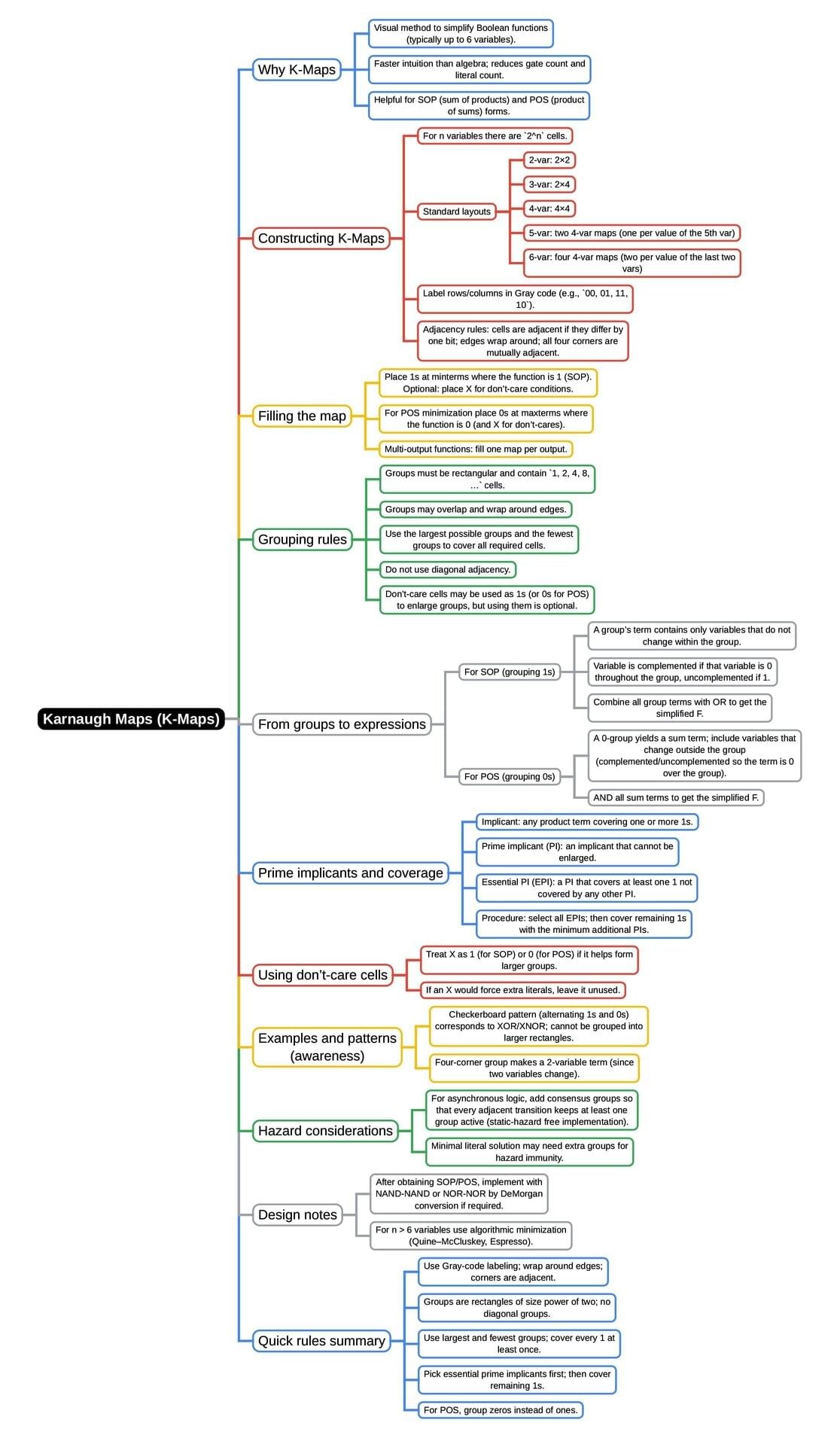Electrical Engineering (EE) Exam > Electrical Engineering (EE) Notes > Digital Electronics > Mind Map: Karnaugh Maps (K-Maps)
Mind Map: Karnaugh Maps (K-Maps) | Digital Electronics - Electrical Engineering (EE) PDF Download

The document Mind Map: Karnaugh Maps (K-Maps) | Digital Electronics - Electrical Engineering (EE) is a part of the Electrical Engineering (EE) Course Digital Electronics.
All you need of Electrical Engineering (EE) at this link: Electrical Engineering (EE)
|
113 videos|91 docs|58 tests
|
FAQs on Mind Map: Karnaugh Maps (K-Maps) - Digital Electronics - Electrical Engineering (EE)
| 1. What is a Karnaugh Map (K-map) and how is it used in simplifying Boolean expressions? |  |
Ans. A Karnaugh Map (K-map) is a graphical representation used to simplify Boolean algebra expressions. It consists of a grid where each cell represents a minterm of the function. K-maps help visualize relationships between variables and identify groups of adjacent cells that can be combined to eliminate variables, thus simplifying the expression. This method is particularly useful for functions with up to six variables, allowing engineers to minimize logic circuits efficiently.
| 2. How do you construct a Karnaugh Map for a given Boolean function? |  |
Ans. To construct a K-map for a Boolean function, follow these steps: First, identify the number of variables in the function, which determines the size of the K-map (2ⁿ cells for n variables). Label the rows and columns using Gray code to ensure only one variable changes between adjacent cells. Next, fill in the K-map by placing '1' in cells corresponding to the minterms of the function and '0' elsewhere. Finally, group the '1's in pairs, quads, or octets to simplify the Boolean expression.
| 3. What are the advantages of using Karnaugh Maps over other methods of Boolean simplification? |  |
Ans. The advantages of using K-maps include their visual nature, which makes it easier to identify simplifications without complicated calculations. They are particularly effective for functions with a small number of variables, providing a straightforward way to minimize logic expressions. Additionally, K-maps help prevent errors that may occur in algebraic manipulation by allowing designers to see the relationships between variables clearly.
| 4. Can Karnaugh Maps be used for functions with more than six variables? |  |
Ans. While K-maps can technically be extended to handle functions with more than six variables, they become impractical due to the exponential increase in grid size and complexity. For functions with more than six variables, other methods such as the Quine-McCluskey algorithm or computer-aided design tools are typically preferred, as these can handle larger datasets more efficiently without the cumbersome nature of large K-maps.
| 5. What is the significance of grouping in Karnaugh Maps, and what are the rules for grouping cells? |  |
Ans. Grouping in K-maps is crucial for simplifying Boolean expressions. The significance lies in the ability to combine adjacent cells containing '1's, which leads to the elimination of variables and reduction of the expression. The rules for grouping include: groups must contain 1, 2, 4, 8, etc. cells (powers of 2), groups can wrap around the edges of the map, and each '1' must be included in at least one group. Overlapping groups can also be formed to achieve further simplification.
Related Searches




















